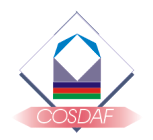Organic Light Emitting Diode
White OLED
White-emitting OLED (WOLED) is of particular importance in various applications such as solid state lightning, LCD backlight and full-color OLED. The lighting market is estimated about 60 billion US dollars per year. The majority of the market requires white or near-white light sources. It is expected that within the next 10-15 years, solid-state lighting devices will replace the bulk of conventional illumination sources because of their advantages in longer lifetime, lower power consumption, and environmental friendliness (no mercury). There are several significant implications to work on white-emitting OLED for solid state lighting. First, it can extend the OLED technology into new product platform (solid state lighting for display and design lighting and ultimately general lighting for household) and will increase value of the technology to commercial enterprises. Second, it can extend the technology performance into a new horizon (e.g. 100X in stability and 1000X in light output as compared with a display) which will allow new product concepts to be developed.
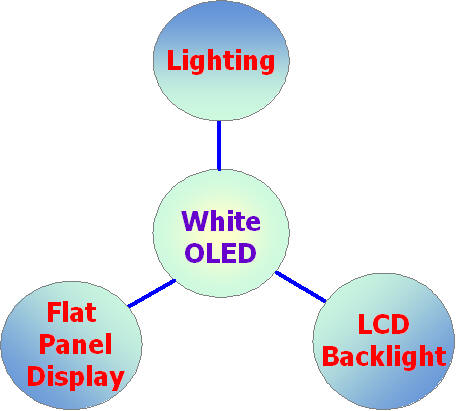 |
 |
| Applications of White OLED |
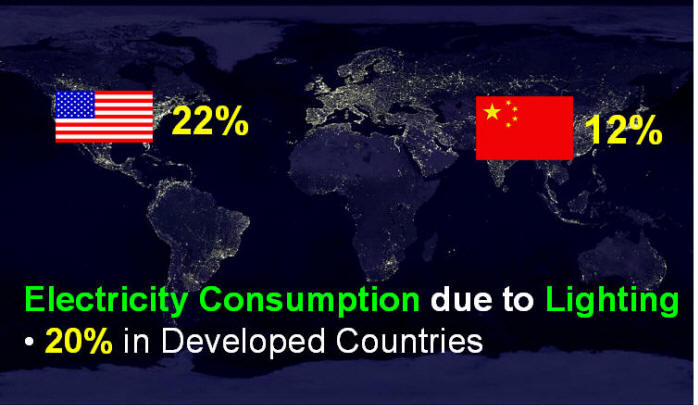
Advantages of WOLED:
- Reduction of energy consumption
- Reduction of CO2 emission
- Environmental friendly
- More efficient, more versatile
- Lower manufacturing cost
- Lower operation Cost
- White light with higher CRI
- Creating new industry and new jobs


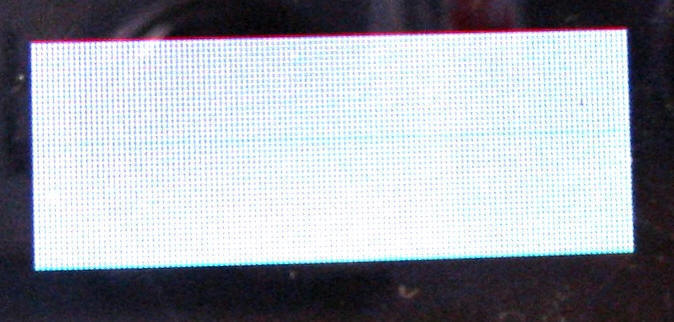
CityU's white OLEDs Adopted by (1) White by Yellow and Sky Blue, (2)White by Bluish Green and Orange; and (3) White by RGB Approaches.
| Light Source | Efficiency | Lifetime | CRI | Glare | Manufacturing Cost | Operating Cost | Environmental Friendly |
|---|---|---|---|---|---|---|---|
| Incandescent Lamp | * | * | ***** | * | ***** | * | ***** |
| Fluorescent Lamp | **** | ***** | **** | ** | ** | *** | * |
| Inorganic LED | **** | ***** | ***** | **** | *** | **** | ***** |
| Future OLED | ***** | ***** | ***** | ***** | ***** | ***** | ***** |
| A comparison of Different Light Sources | |||||||
The CityU's OLED research team started to develop the materials technology and device engineering of white-emitting OLED in 1999. Several approaches and developed technologies in material design and/or fabrication have been adopted: white by RGB, white by yellow and sky blue, white by bluish green and orange, and single white. The efficiency and lifetime of the white-emitting device are improved via triplet emission, optical coupling, stack cells, proprietary high-performance electrodes, etc. To date, we have acquired a US patent (US patent no. 6,521,360) and published a number of articles in international journals in this area. Worldwide companies and universities have also been actively improving the performance of WOLED through several national programs.
| Country | Project | Target | Funding (US$M.) | Milestone |
|---|---|---|---|---|
| USA | Next Generation Lighting Initiative | 160 lm/W (Product) | 28.5 50.0 |
2003-2005 2006-2008 |
| EU | OLLA | 50 lm/W | 24.0 | 2004-2008 |
| EU Optoelectronics Photonics-21 | To be confirmed | 55.0 (Portion) | Since 2004 | |
| Japan | 21Century Lighting Program | 100 lm/W | 41.0 | 1st Stage: Completed 2nd Stage: Pending |
| Korea | Korean National Program on LED Advancement | 80 lm/W | 100.0 | 2004-2008 |
| Mainland China | 国家半导体照明工程 | 130 lm/W (LED); 60 lm/W (OLED) |
15.0 27.0 |
2001-2005 2006-2010 |
| Taiwan China | White LED Project | 45.0 | 2003: Completed | |
| Next Generation Lighting | 100 lm/W (Prototype); 40 lm/W (Product) |
12.0 | 2003-2005 | |
| Worldwide National Fundings to Support the R&D of WOLED | ||||
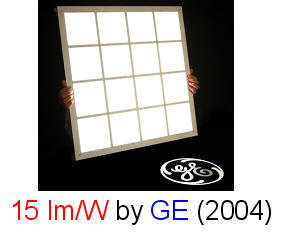 |
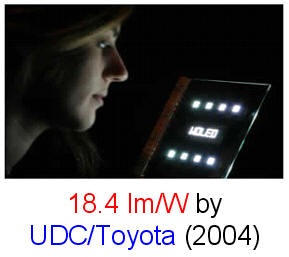 |
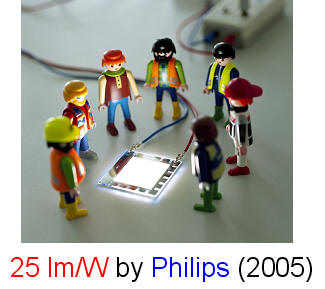 |
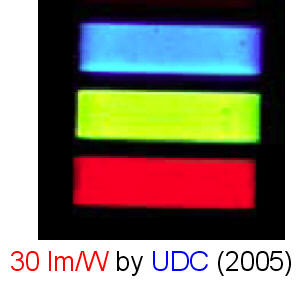 |
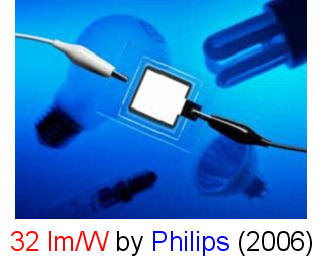 |
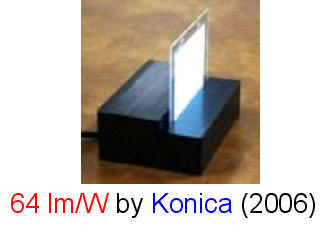 |
| Significant Improvement of WOLED Performance Throughout the Recent Years | |

